MAY 12, 2020 : The parks in Israel have reopened! No more restrictions on the distance you can travel! Falafel stands are up and running! After almost six weeks at home in lockdown, it was time to venture up north on a sightseeing trip.
In the Times of Israel last week, there was an article about eight different viewpoints overlooking Lake Kinneret. After a winter of much rain, the Kinneret is almost full – having risen an unprecedented amount in the past few months. None of the viewpoints sounded familiar – so it seemed like something new and interesting to do.
It was not the perfect day for travelling – the sky was grey with haze and temperatures were above 30-degree Celsius. However, Mark had the day off from work and we were raring to go. I printed out the article, mapped out the places on Google Maps, decided on which route to take, and we were ready to start.
To reach the Kinneret, we drove through Wadi Ara, towards Bet Shean and then up the beautiful Jordan Valley. The colors were a mix of summer and winter – the dried-out yellow of summer was already everywhere, but the lush green of winter had not yet totally disappeared. The last of the spring flowers were still around.
The first stop of our trip was the Levi Eshkol Viewpoint. In the article it sounded like you just drive to the lookout, take in the view and proceed to the next lookout. In reality, it was much more than that. Getting to some of the lookouts was part of the adventure. Let’s say to reach the Levi Eshkol Viewpoint it would have been better to have a 4-wheel drive.
To come to the lookout you drive through the houses of Menahemya – a small town south of Lake Kinneret, at the northern end of the Jordan Valley. You then wind your way beyond the houses up a narrow gravel path to the top of the hill. On the way you pass the Menahemya lookout and see the town you just drove through below as well as your first glimpse of the southern part of Lake Kinneret.

When you reach the top, there is a memorial to Levi Eshkol. Because reaching the lookout was so difficult, Mark said the memorial must have been funded by the opposition. It was placed here because down below you can see Kibbutz Degania, of which Levi Eshkol was one of the founders. Being the only ones crazy enough to drive here, social distancing was not a problem.
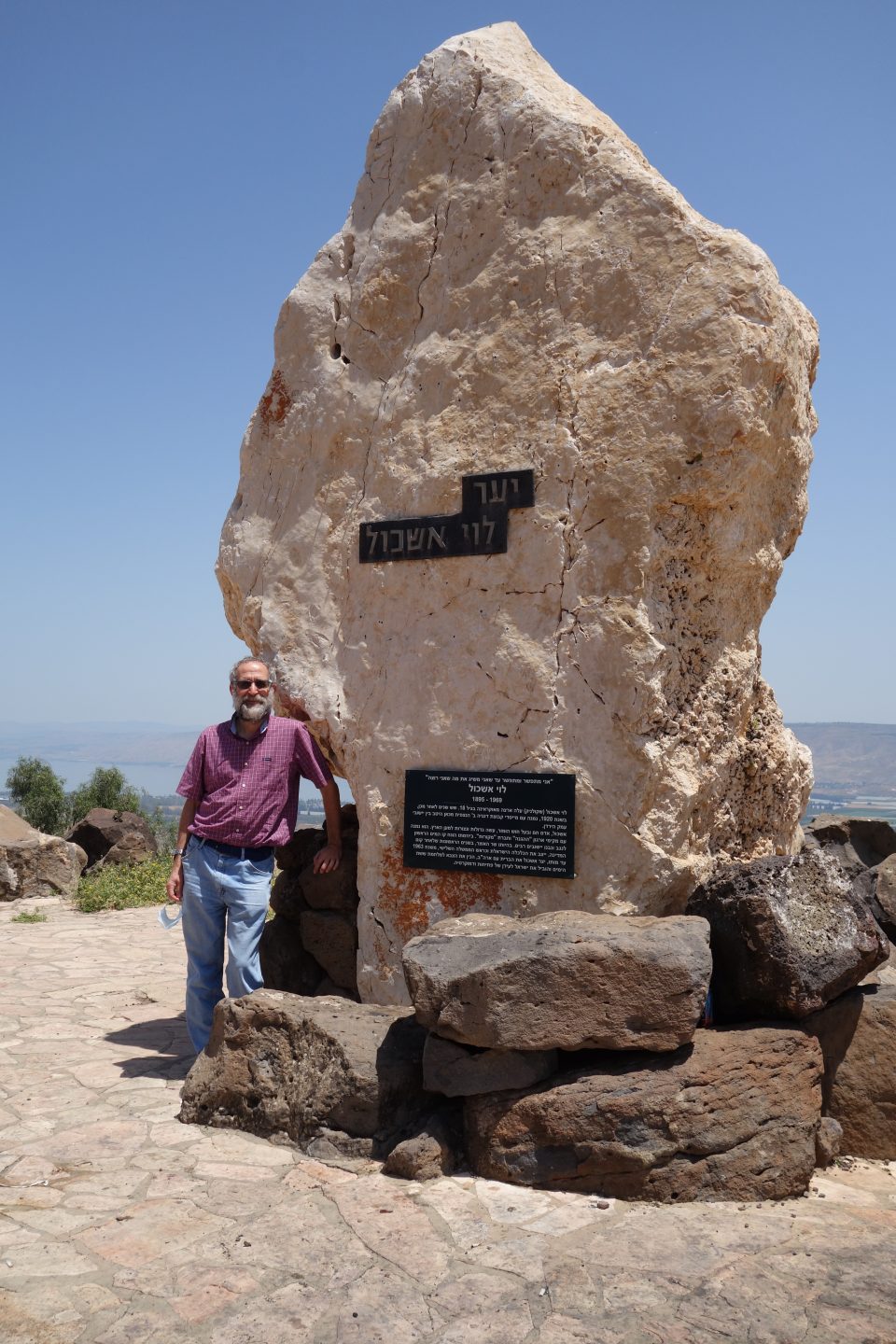

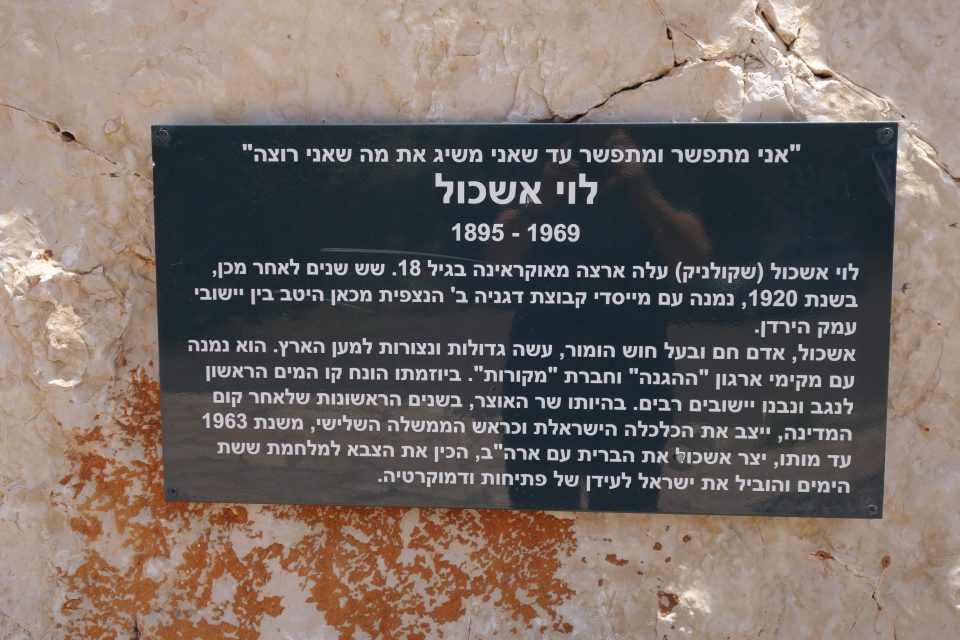
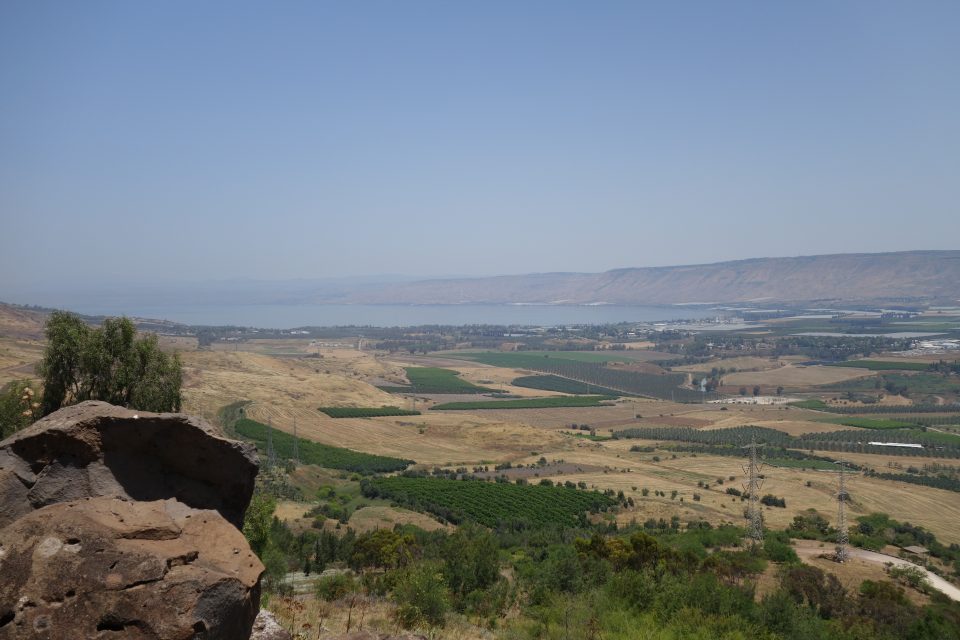
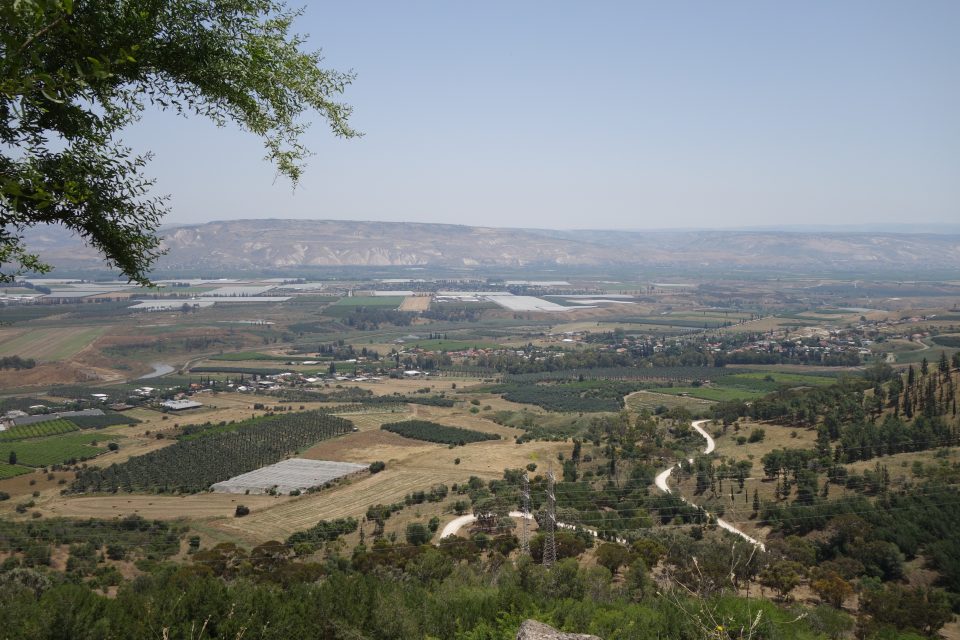
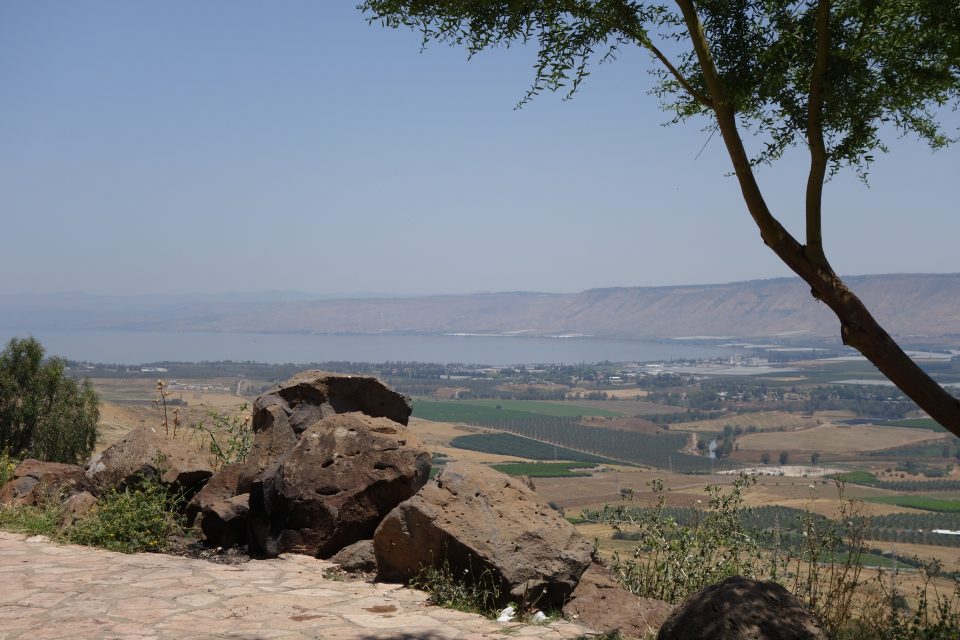
From there, we then had a beautiful drive in the southern Golan to the next viewpoint. The road, route 98, climbs up the mountains, and eventually you are driving along the border with Syria. Spectacular.
The next lookout was a bit harder to find, and we needed to backtrack at one point. While driving back, we stopped at an interesting statue along the road. Turns out that this is a memorial for Israeli spy Eli Cohen. Along the road at this location there are many large concrete cubes. The statue sits on one of them. These were part of the Syrian anti-tank blockade, and their location here was one of the many pieces of important information that Eli Cohen was able to relay back to Israel. How did we learn this? On the base of the statue was an audio information box. Press a button (choose the English button or the Hebrew button) and you get an explanation of what you are seeing. During the day we came upon several of these boxes. I always like to know more, so whenever we saw one along the way, I pressed.
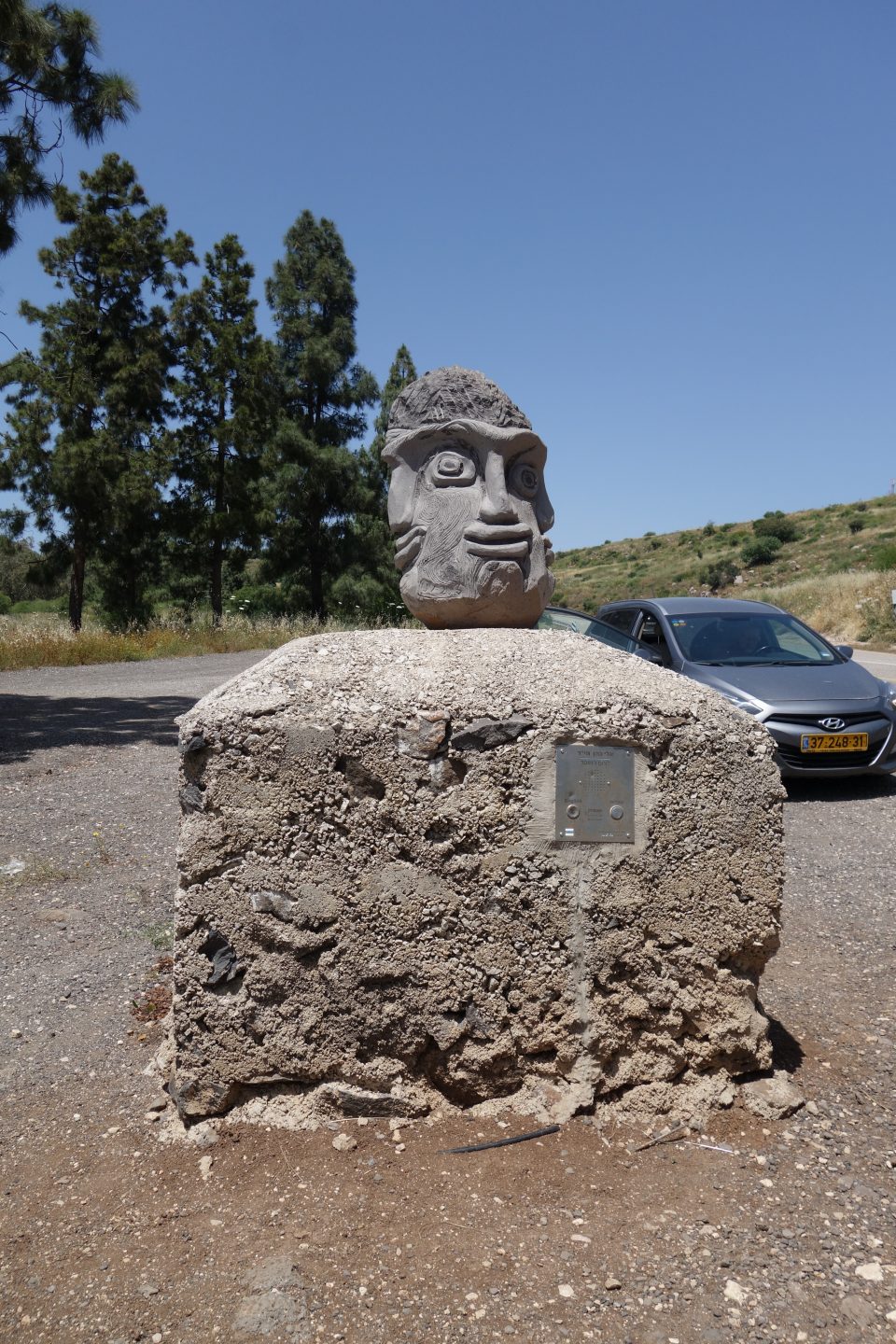
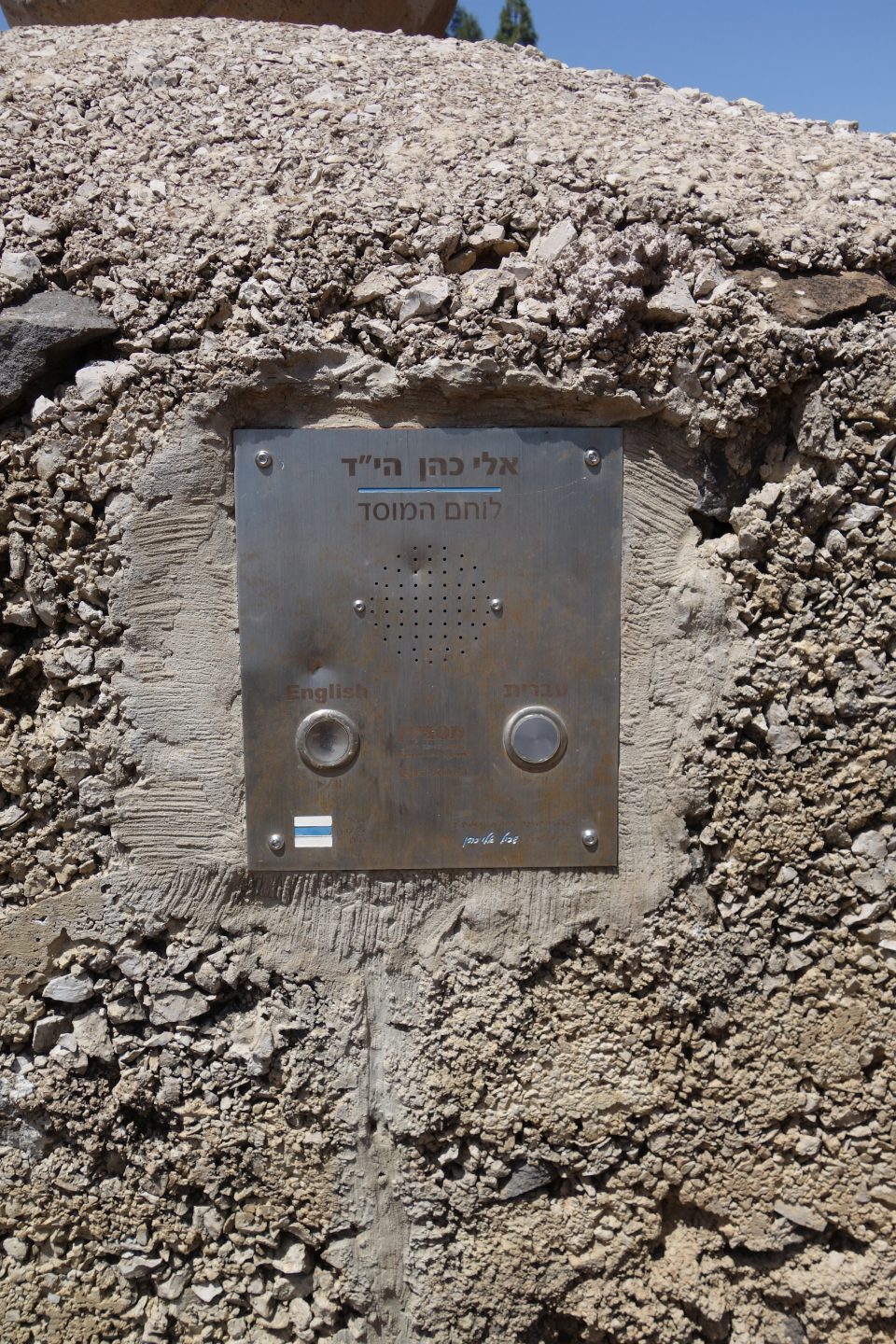
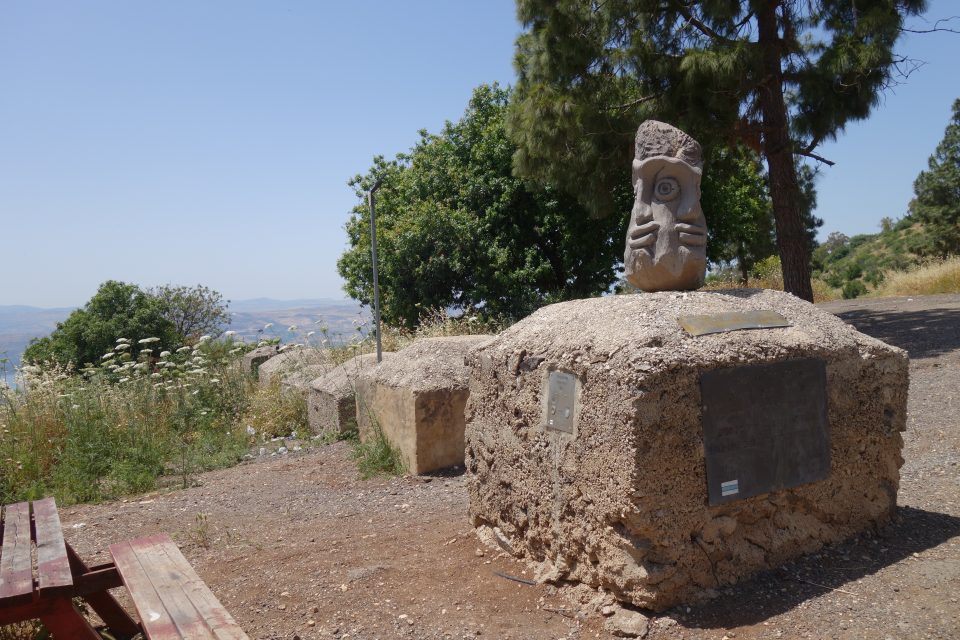
Not knowing exactly where to go for the next lookout, we ended up at Ein Akuv – a spring with perfectly clear running water and many picnic tables. A good place for lunch.

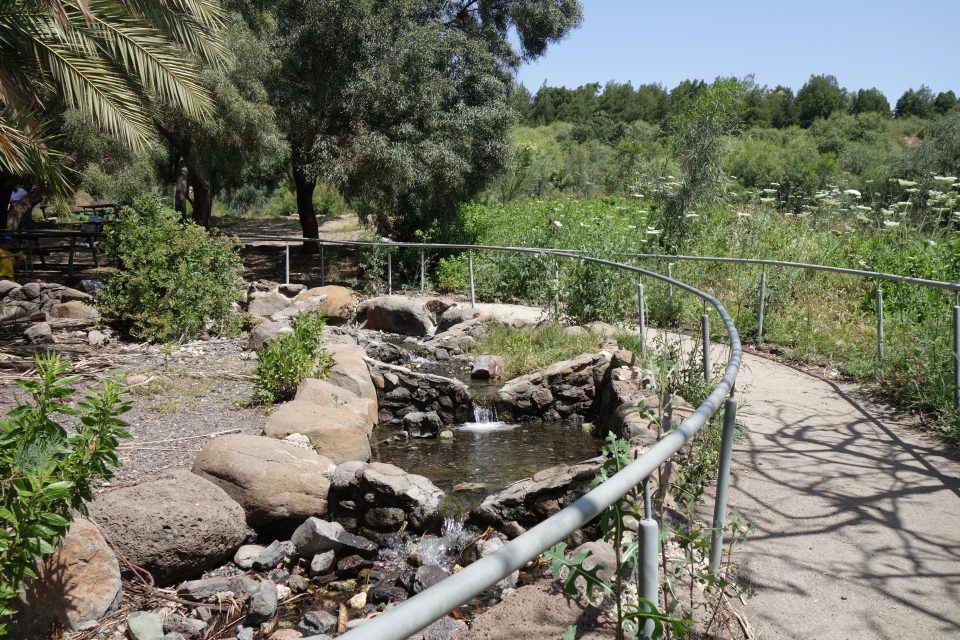
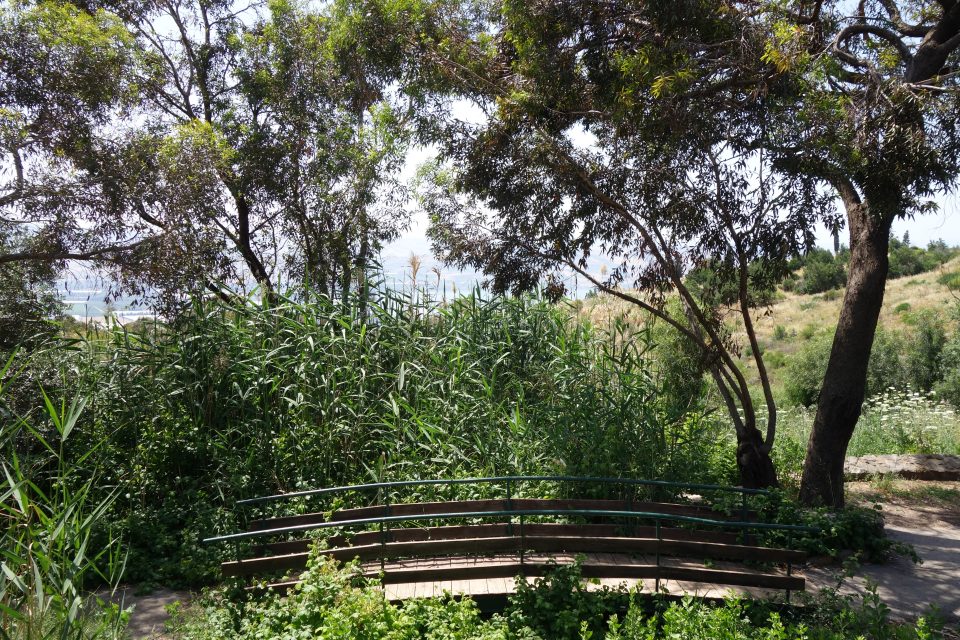
After lunch and a short walk through the spring, we found the nearby Kinneret Outlook for a beautiful view of the southeast part of Lake Kinneret. The lookout is a memorial for a different Kinneret – Kinneret Mendel , who was killed in a terror attack in Gush Etzion in 2005 at the age of 23. An audio box tells the story of her short life and her love of Eretz Israel.

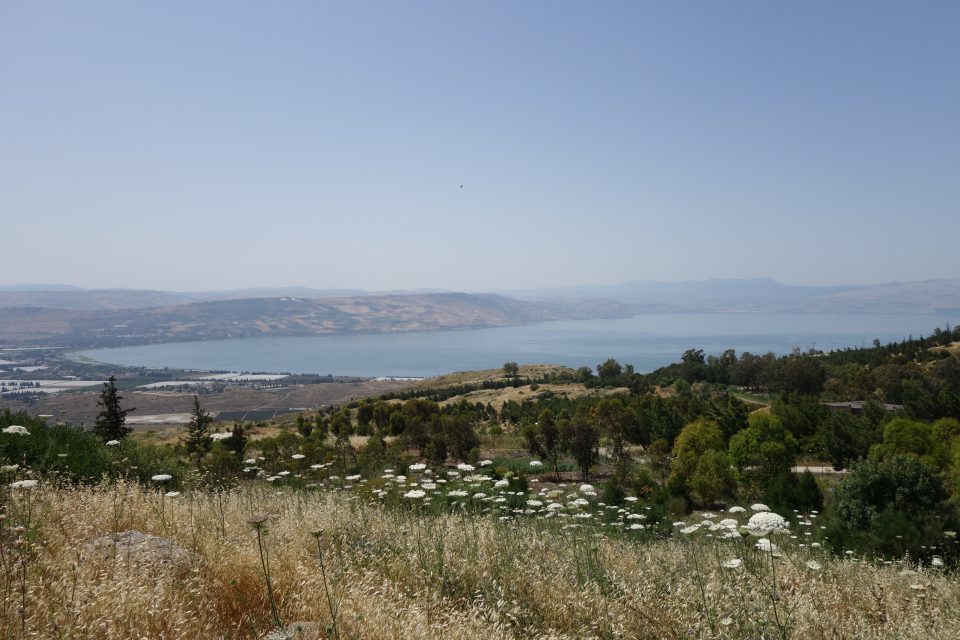

Also in this area there is a pillbox outpost you can drive to, but we had had enough for the time being of bumpy gravel roads, and decided to continue to the next destination a few kilometres up the paved road.
Driving in the southern Golan, we passed many agricultural fields – fruit trees, wheat, and other crops. In the distance loomed the giant Mount Hermon, with snow still visible on its peaks.
The third lookout was called the Peace Vista. This was an easy lookout to reach and for anyone travelling in the area, it is right off the main road and highly worth the short time it takes to get there. From the parking lot, you walk a few meters and then Wow – the whole Lake Kinneret opens up in front of you. You can see all the way from the southern shore to the northern end. Spectacular!

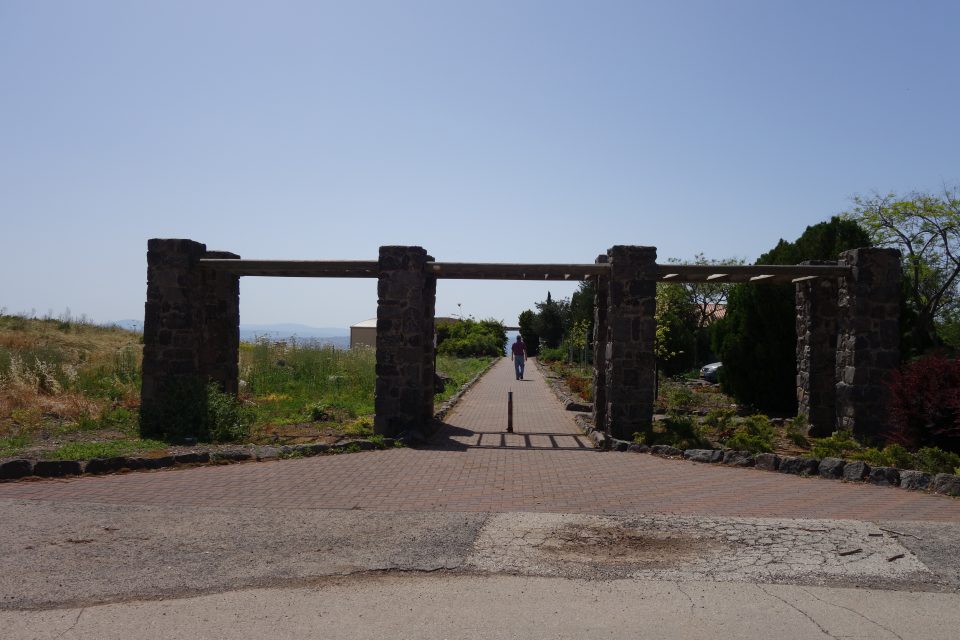
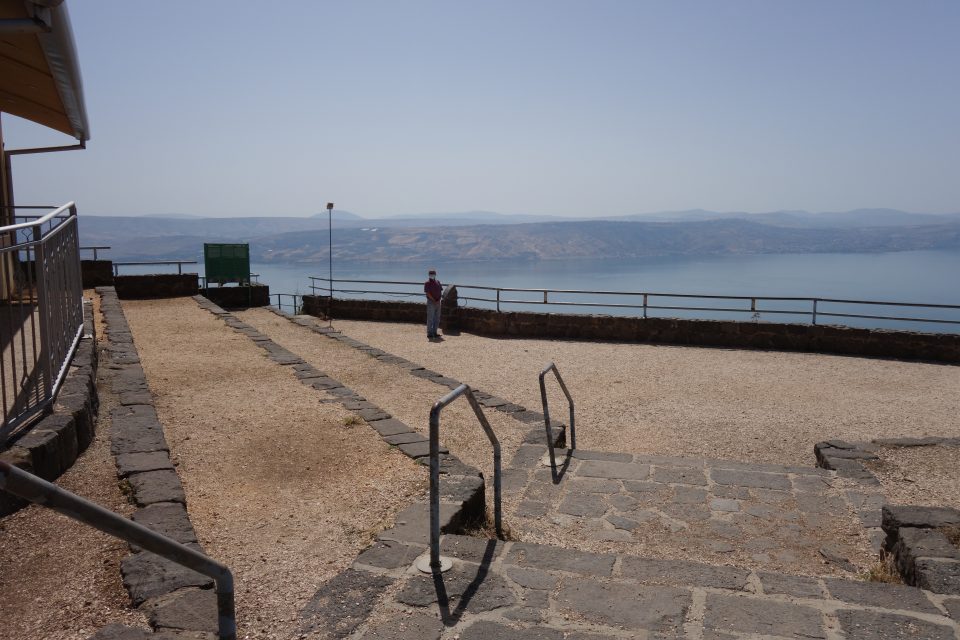

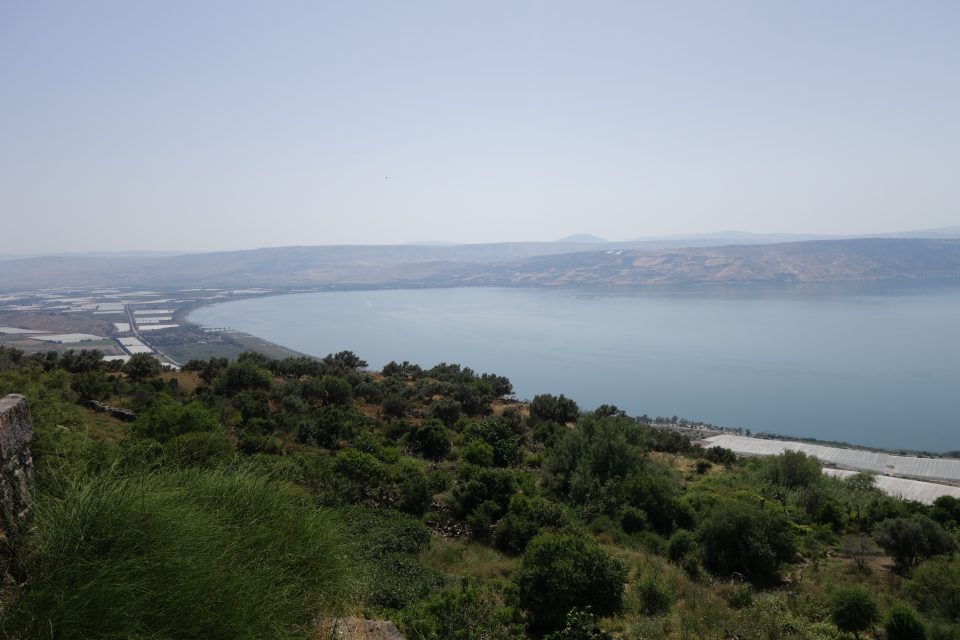
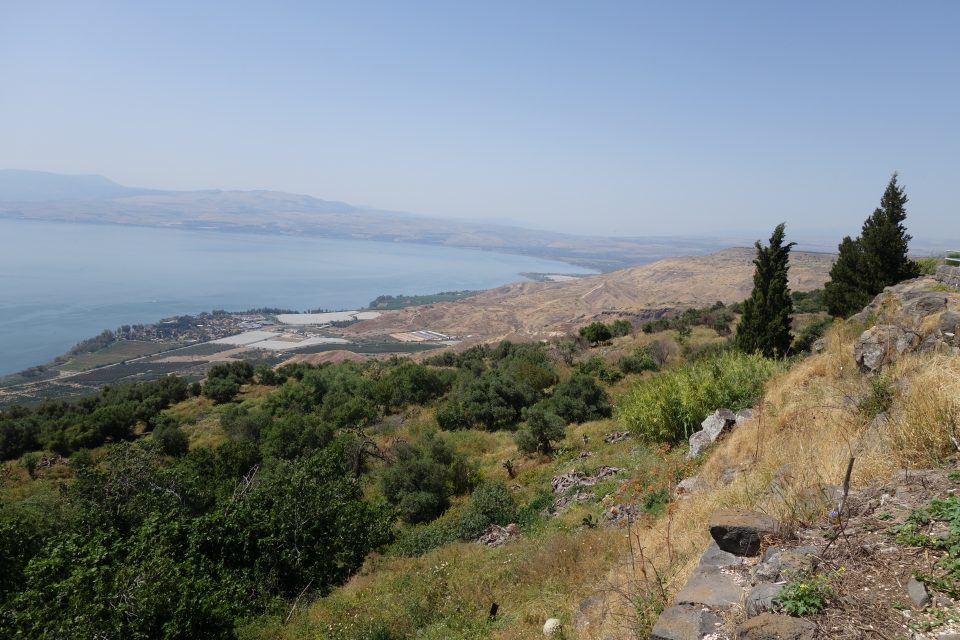
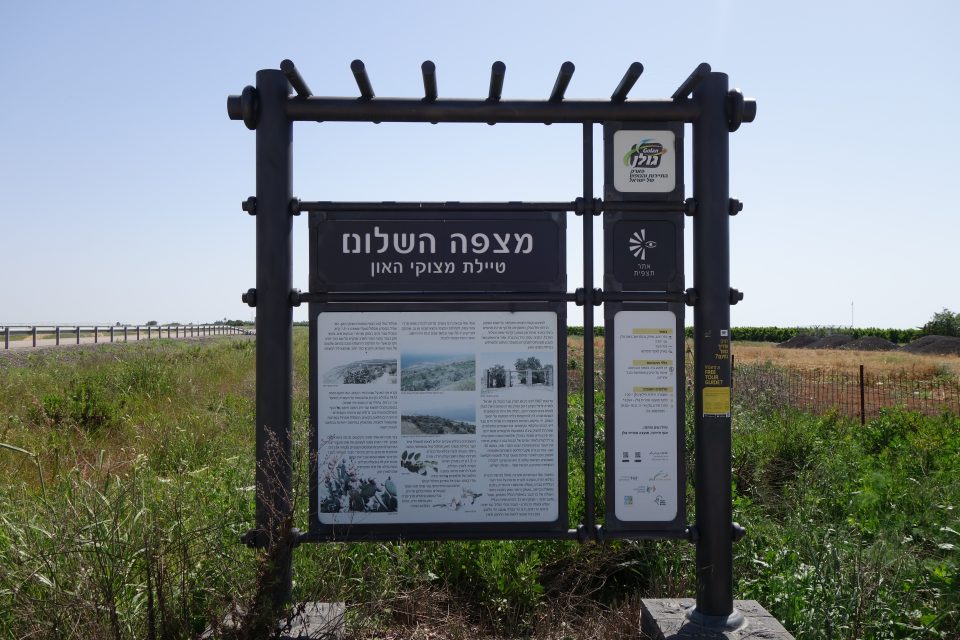
After taking in the view, we bought sorbet ice pops (vegan) from the little stand at the entrance. We thought to sit and eat them while looking at the view. The only place to sit was on a low wall made of the local black basalt stones of the region. We quickly learned that sitting on a black stone in 35-degree Celsius heat was much too hot on our bottoms, and ate the sorbet walking back to the car.
The next stop, just a few kilometers up the road, was Mitzpe Ofir. This is a lookout created by the father of 16-year old Ofir who died of an illness. At the lookout are planted 16 olive trees that provide shade for picnic tables. To reach the outlook, you drive through a grove of olive trees on a gravel road until you reach the end of the plateau and can see the view below.
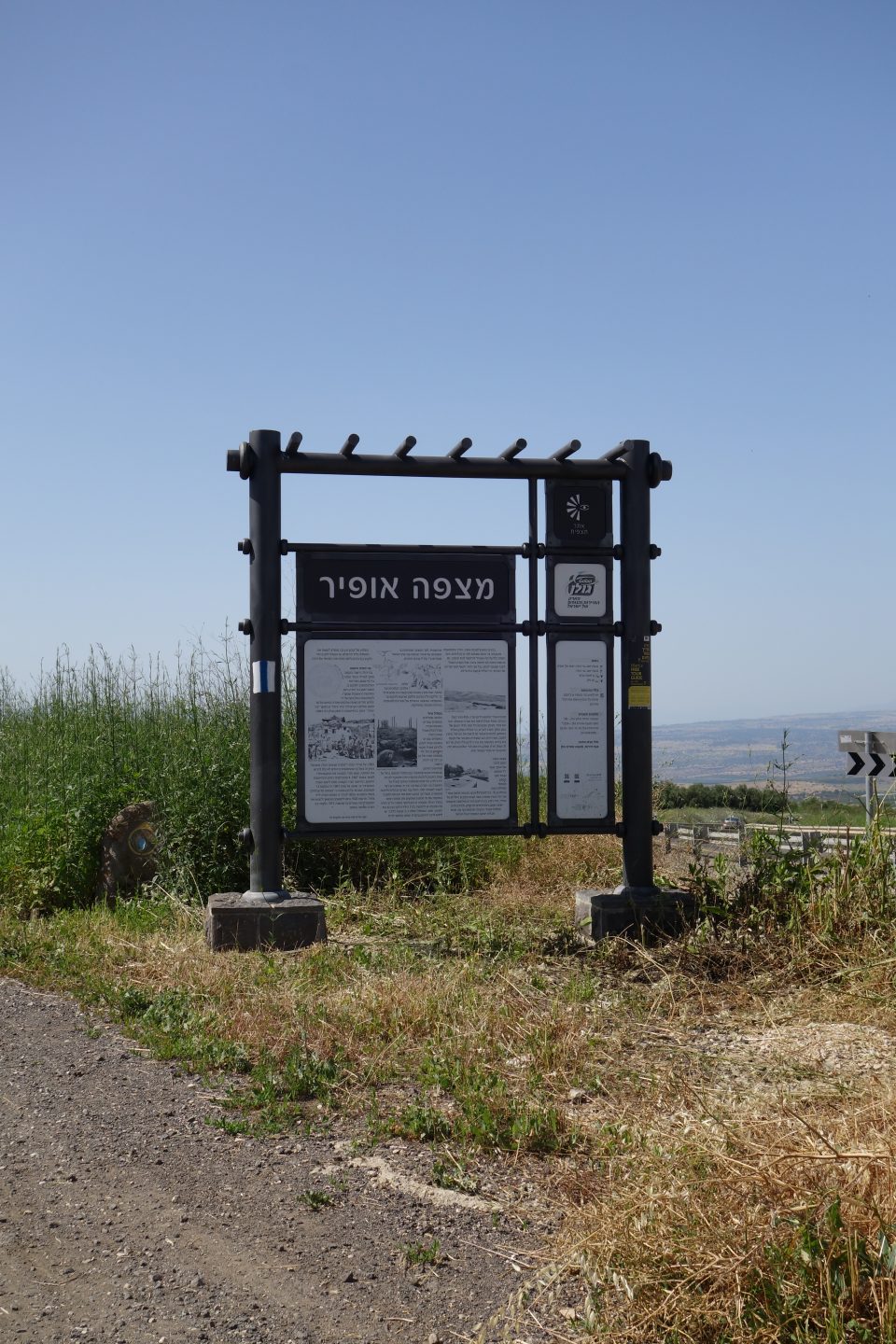
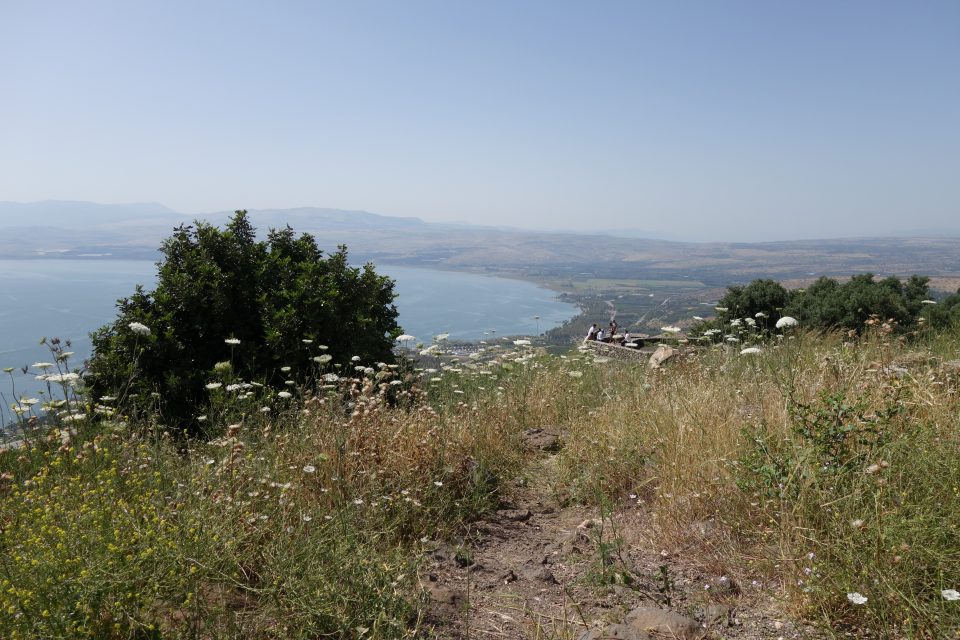
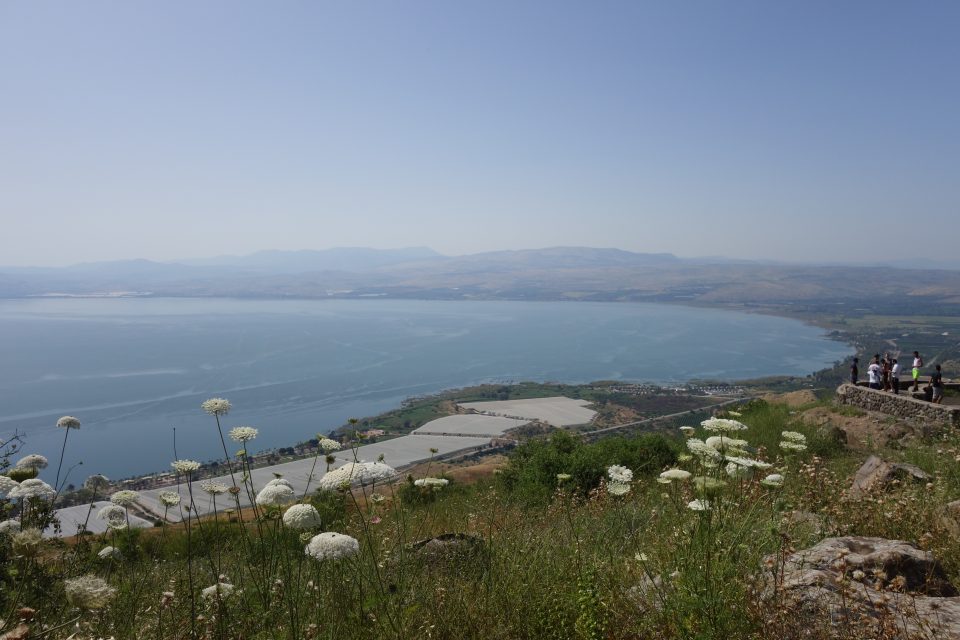
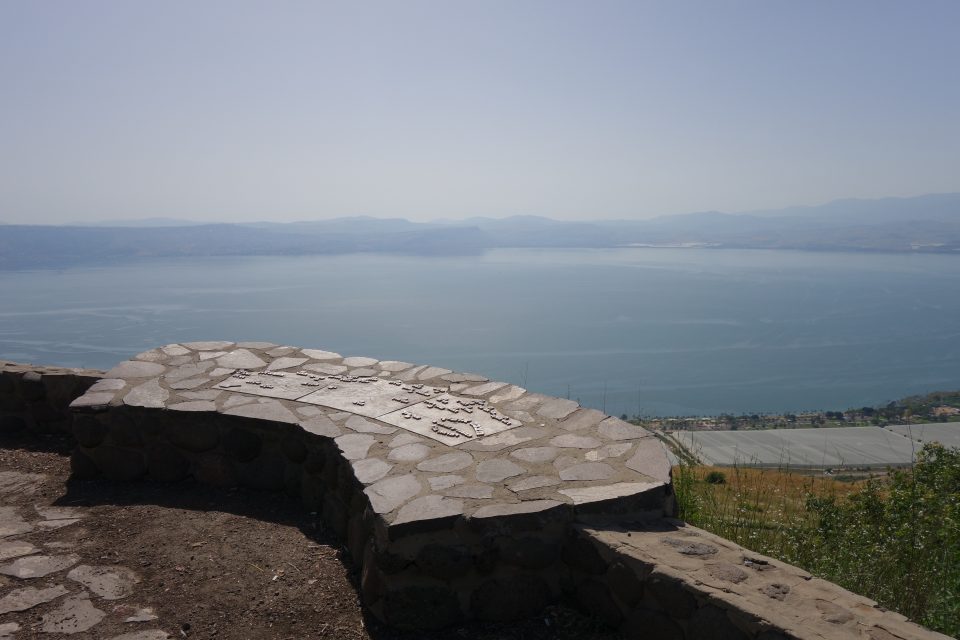
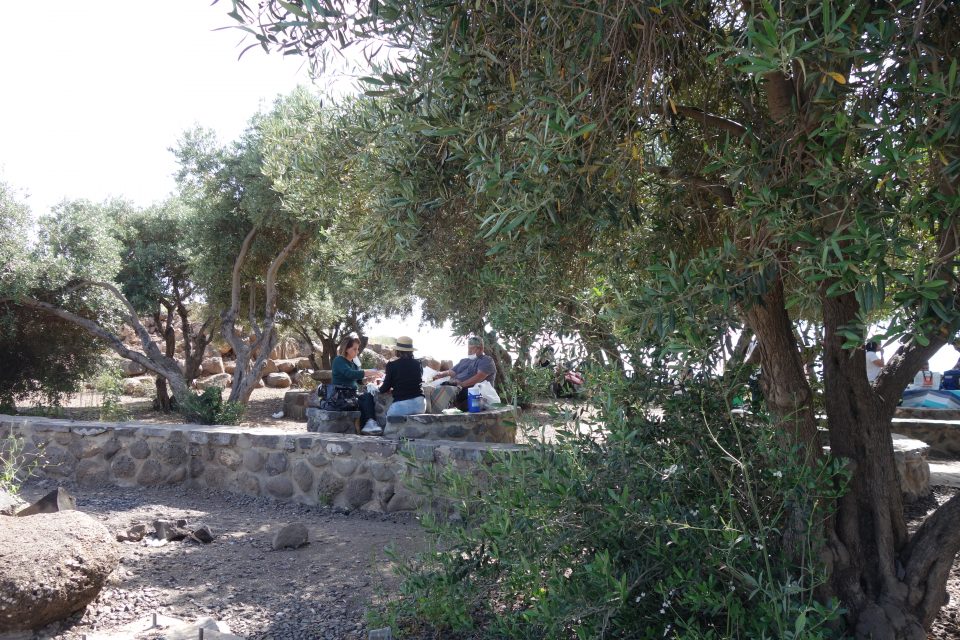
The next stop was a lookout over the Beit Saida valley – a lush valley that includes the Majrase and Zaki streams. The Beit Saida Viewpoint is right on the main road and very easy to reach. The road, route 869, up the valley was gorgeous. The lookout is just above Maale Gamla, one of four settlements created in the Golan by Itzhak Rabin, as an answer to the UN’s Zionism is Racism proclamation in 1975.
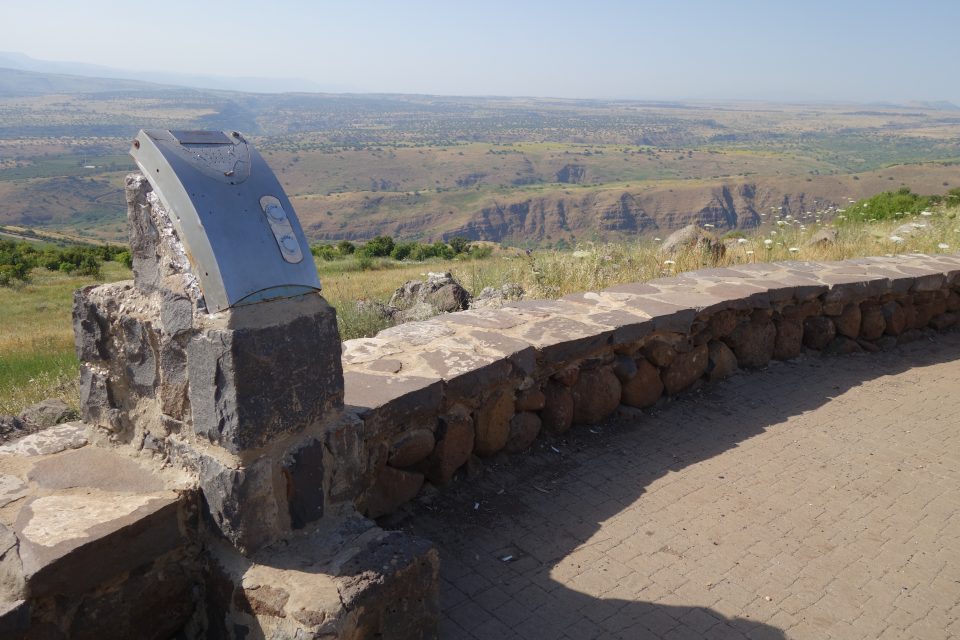
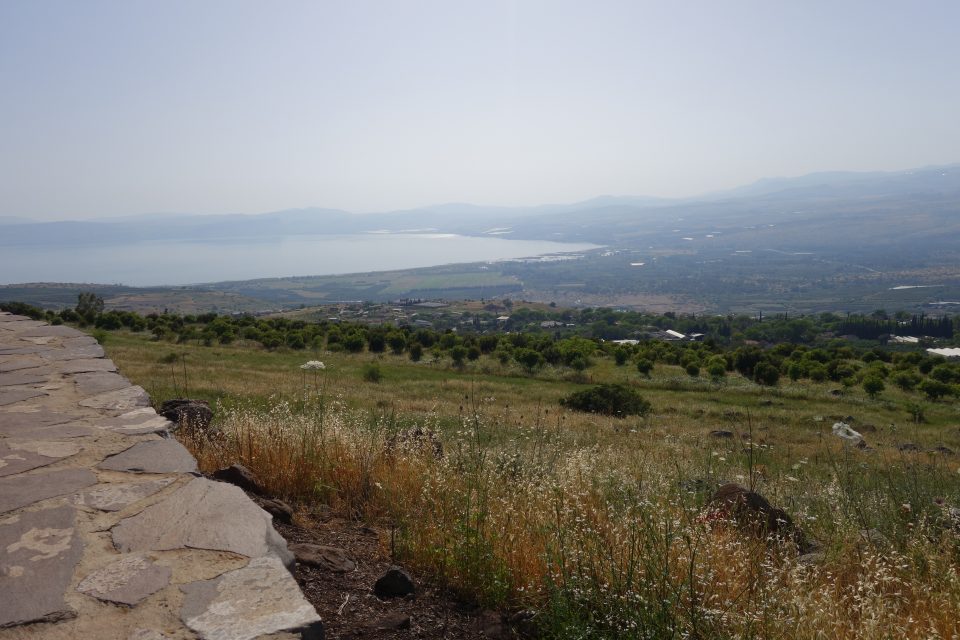
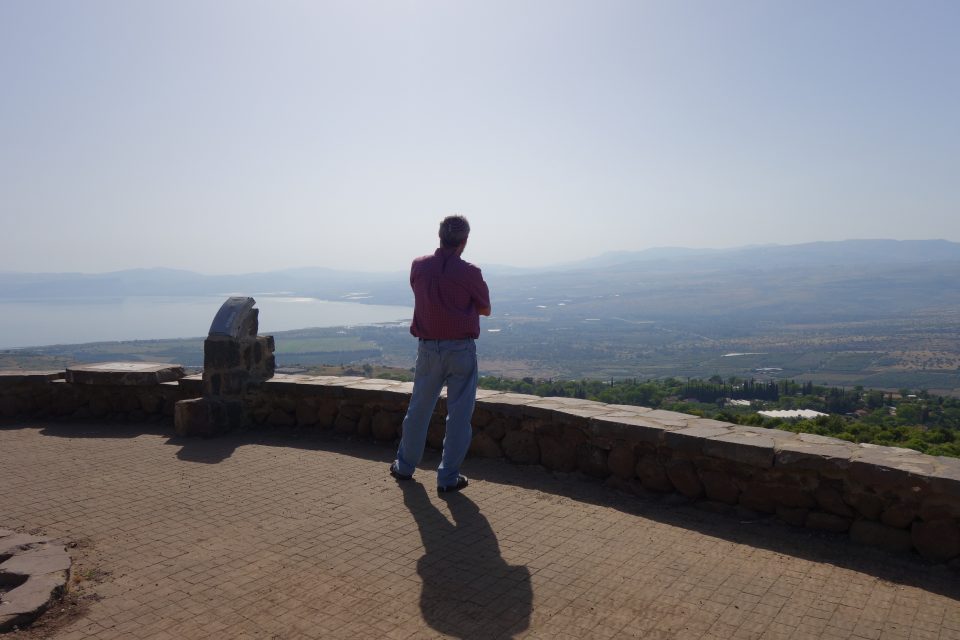
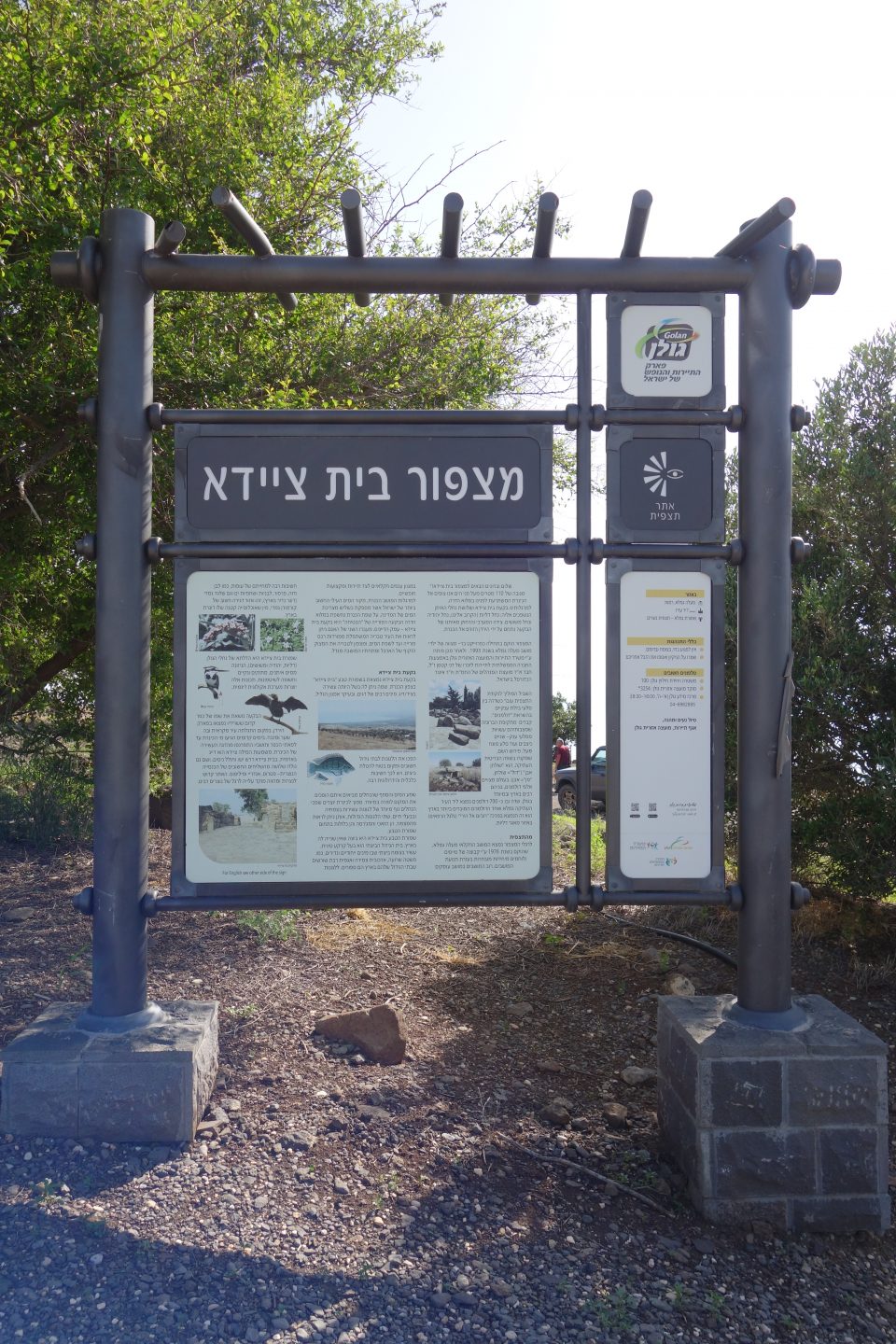
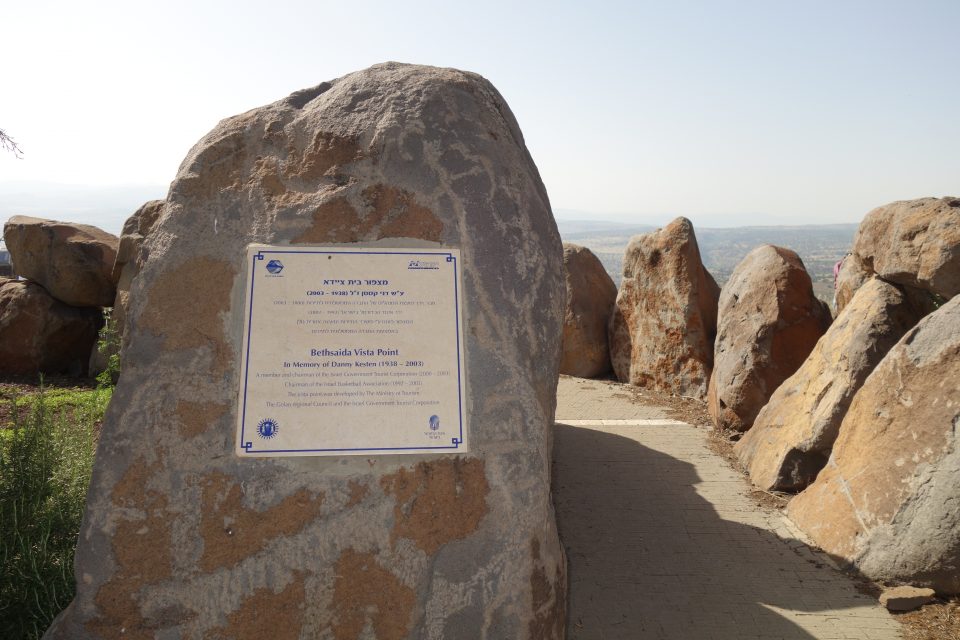
In Hebrew the name of this place is Mizpor Bet Zadia – we were wondering what is the difference between a Mitzpor and a Mitzpe? We knew that Mitzpe is a high viewpoint. But what is a Mitzpor? After some research (thank you Hebrew Wiki) we learned that a Mitzpor is a viewpoint for looking at birds.
We then drove across the northern end of the lake to Almagor – the location of the next viewpoint. To reach the lookout, we needed to drive through Almagor, but the gate to the moshav was closed. We were about to turn around when someone who was leaving the moshav arrived and opened the gate. We quickly snuck in before the gate closed. Felt like a true Israeli. On the opposite end of the moshav is a memorial to the 41 soldiers who fell at this place in 1951 in a battle with Syria – Tel Mutila. There are still bunkers here. Past the memorial, engraved with the names of the soldiers, is a view of Lake Kinneret from the north. You can easily see how much the water level has risen – the lake is full of bushes that were previously growing on dry land.

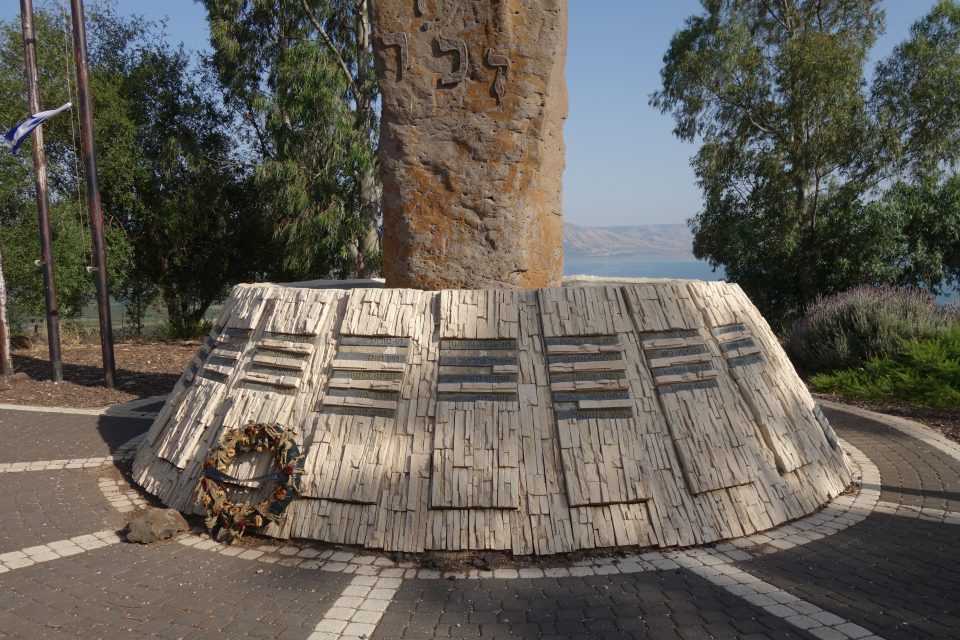
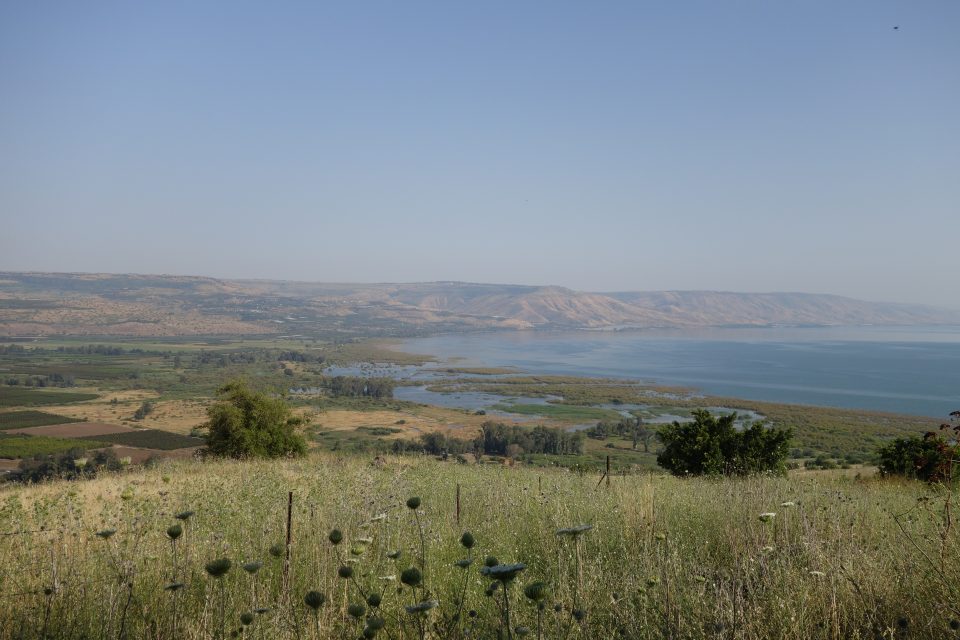
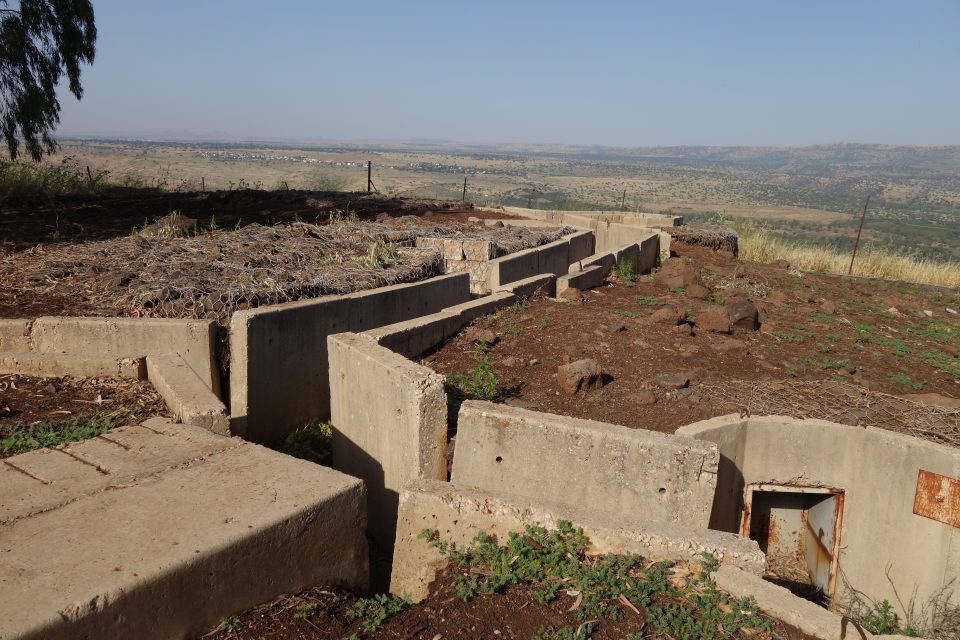

At this point, it was already late in the afternoon, we decided it was time to head home and we would leave the two remaining lookouts – the Swiss Forest and Ein Poriya – for another trip.
When our kids were small, all trips up north included a stop on the way home in Afula at the Central Bus Station for falafel dinner. The specialty there was tossing the falafel balls into the air and catching them with the pita. We discovered the area had totally changed, and nothing looked familiar, but we did find an open sabich stand – sabich is fried eggplant with a hardboiled egg and salad in a pita topped with techina. Delicious.
We had seen the Kinneret from the south, the east and the north. On the way home, as we were driving, we got a few glimpses of the lake from the west. We saw Lake Kinneret in all its glory – no matter from which side you look at it. A spectacular day.
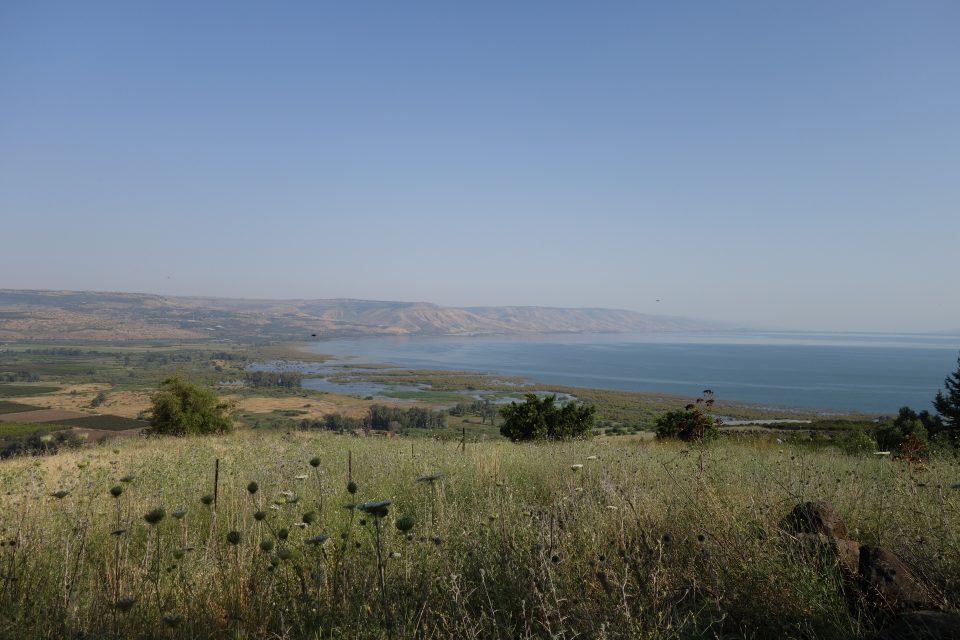
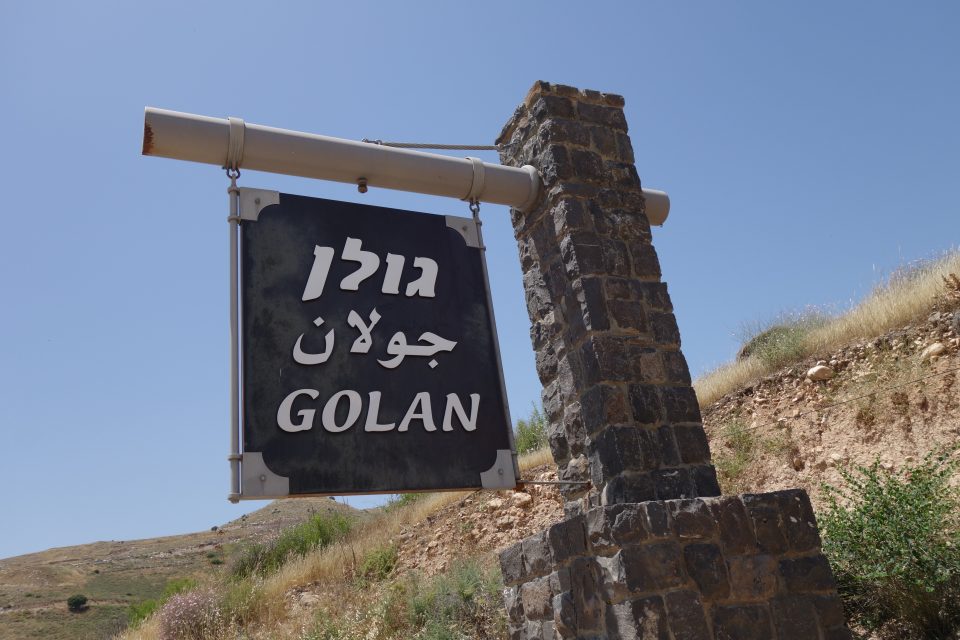
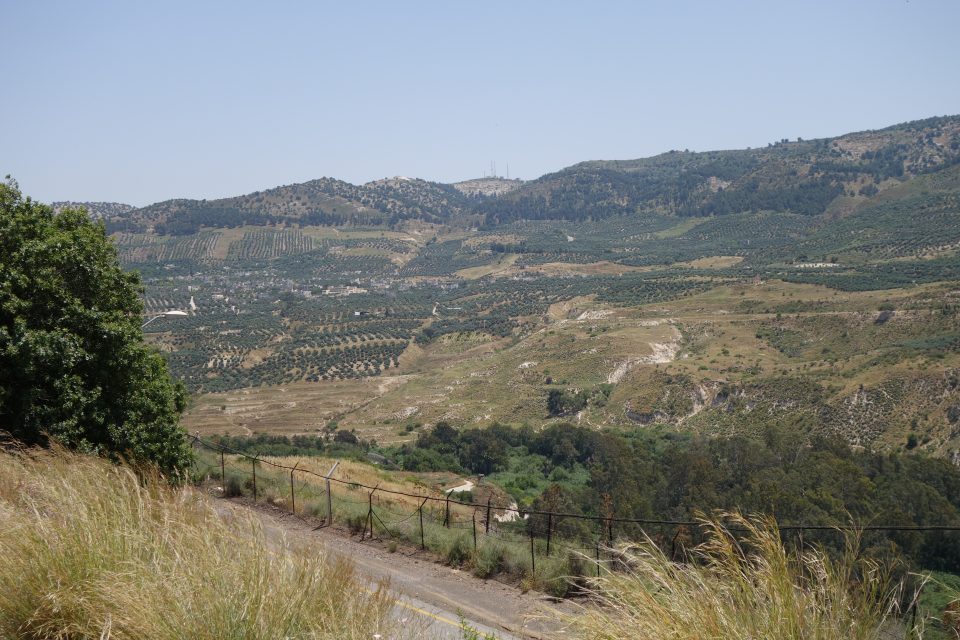
Nice! Who needs Australia anyway??
Beautiful supporting pics, as usual. Chuckled at the picnicker wearing a face mask – a sign of the times!